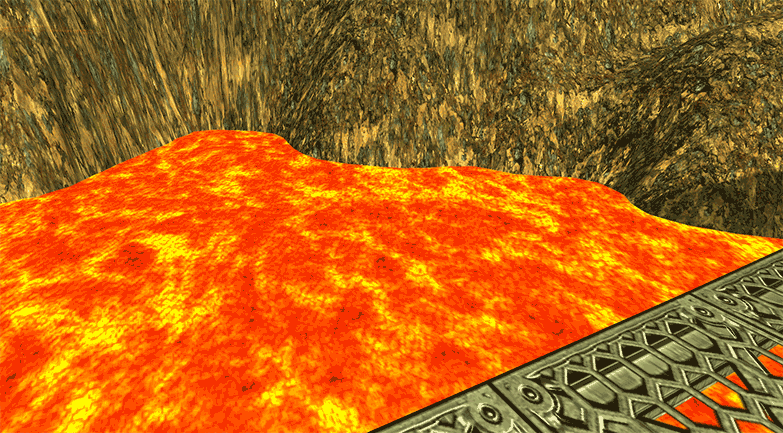
Today we bring you a new post about art development. We will show you how we solved the problem of lava. Yes, now you know we have a circuit with lava.
We knew that most of the games spend more time developing very awesome water effects, but looking for lava references we realized that there are a lot of good games with very simple lava. If you look at the lava, in almost every game you can see only a self-illuminated texture in a plane improved by camera effects and sometimes it didn’t even move.
First we looked for examples and references, but now you know the problem we had. Then we thought about making complex shaders with floyds and different layers of movement, but it was too expensive for the time we had for processing it. Eventually, we ended up making our own system.
We made a plane in the area full of lava with a self-illuminated material and normal bump. Needless to say what “self-illuminated” means. Normal bump (quickly explained) is an RGB texture where each channel (red, green and blue) is a direction with a different black and white map. That is used by the renderer to perform a bumpy surface with lights and shadows.
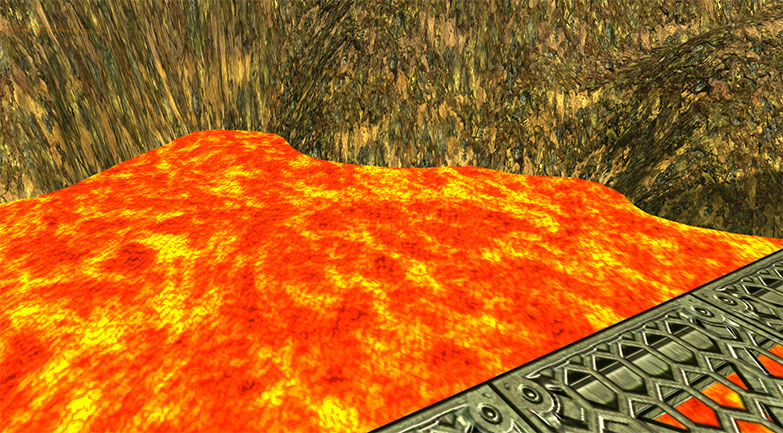
Above, we put over an multiplier material. The multiplier effect multiplies the texture RGB values to the RGB below. The result is a mixture with the self-illuminated texture providing darker and brighter areas.
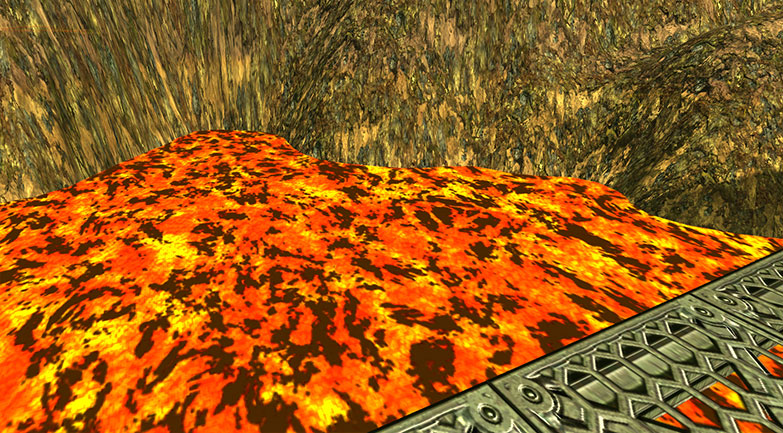
The last layer is an additive texture in order to make some highlights. The additive effect adds the RGB texture to the other RGB rendered below.
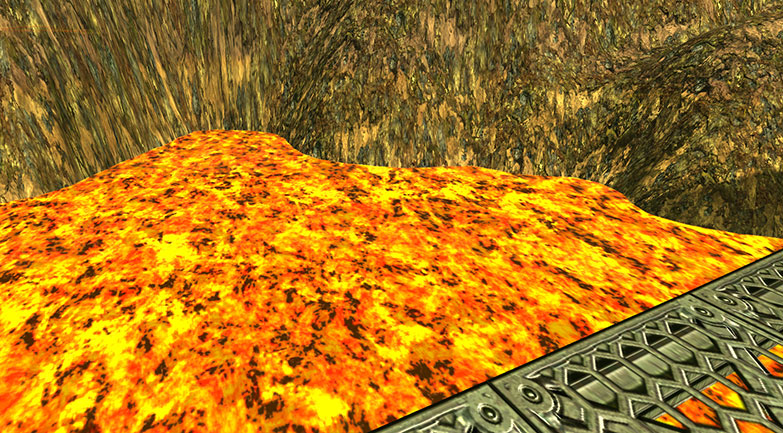
The result is a mix of colors containing darker and brighter areas. We can see a surface with different lava colors like yellow, orange, red and dark brown. But that is too simple. We used a script in order to move every layer with a different speed and direction, this movement gets a very good effect combining the materials features.
When the lava surface is done, we use a distortion shader (based in normal bump maps) for making the warm effect of lava. For this purpose, we have a surface with the material and we move the texture.
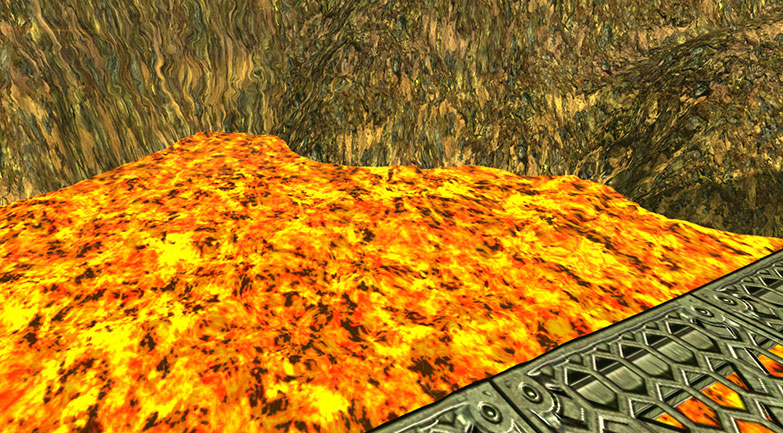
Then we only need a good illumination and some camera effects and that’s all. In the future we will add some lava splash and other details.

Ángel


